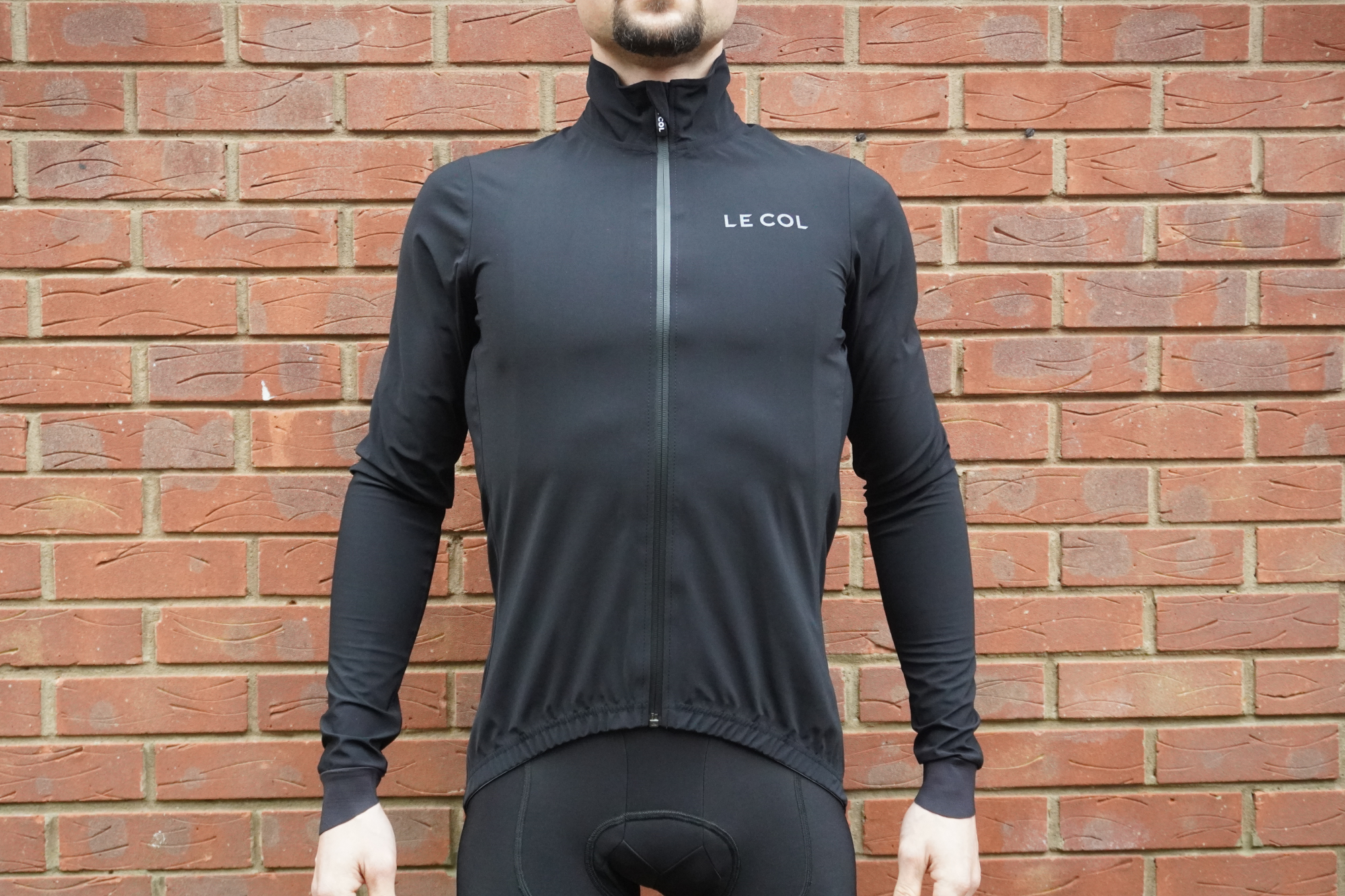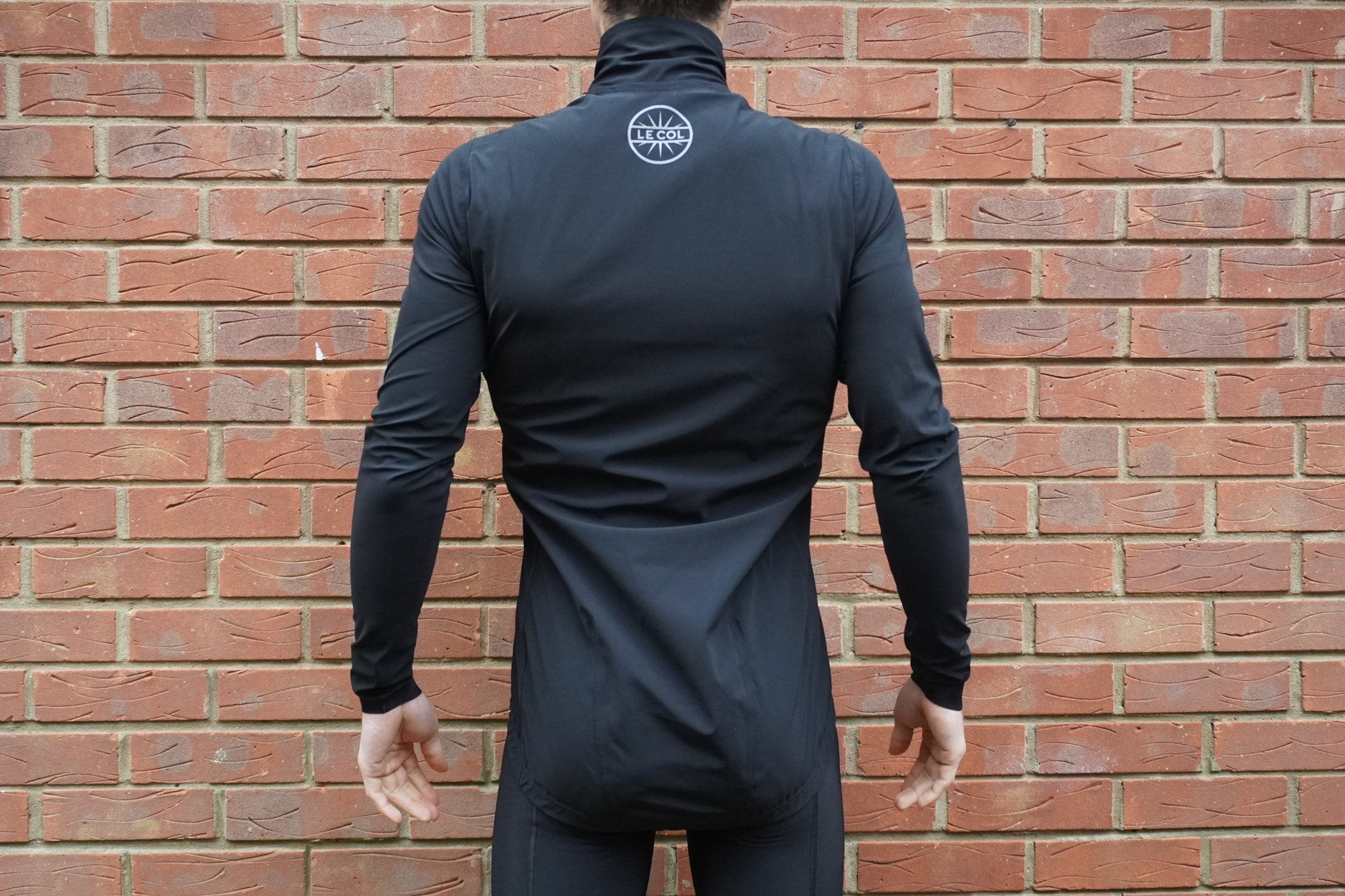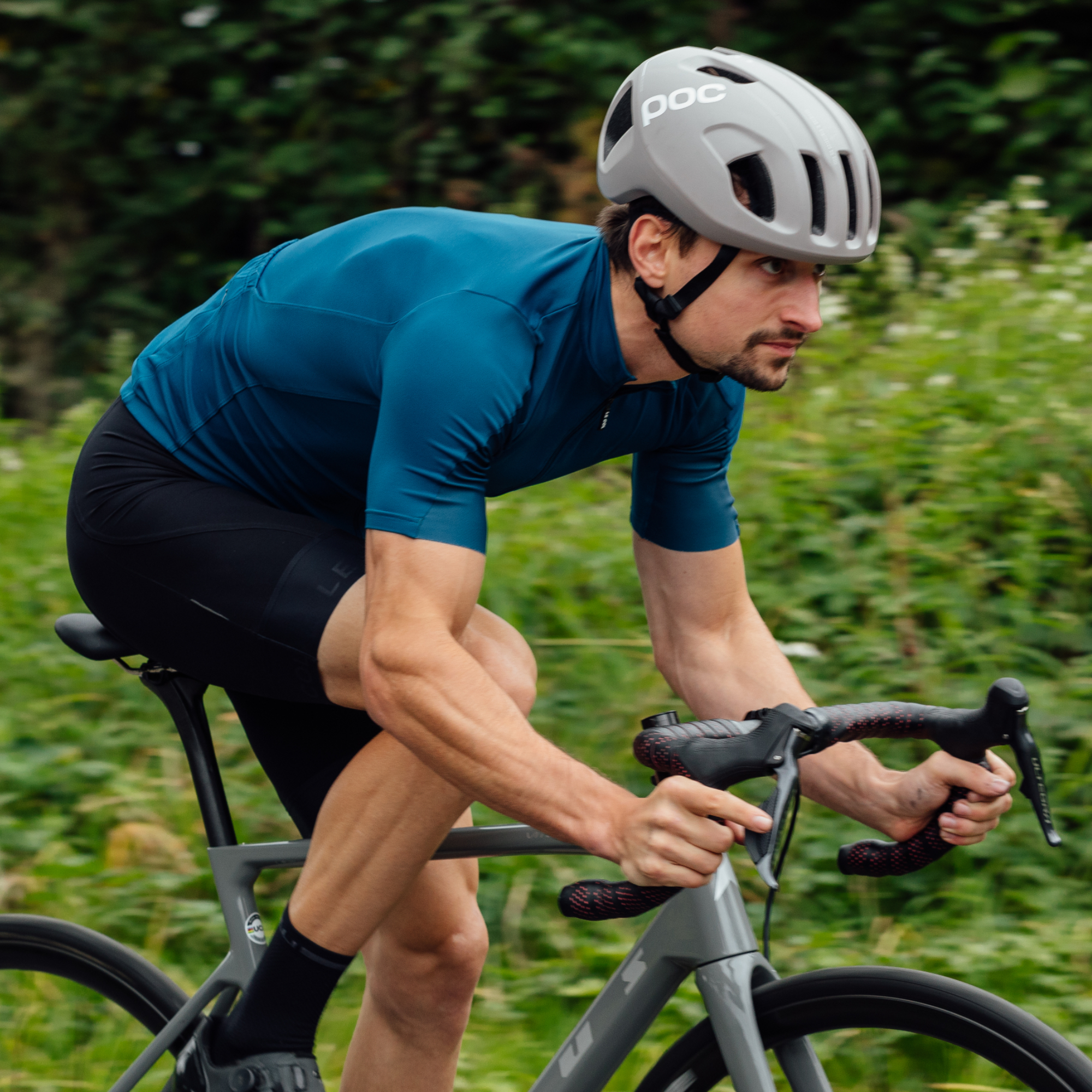Le Col Pro Rain Jacket review
The Lecol Pro Rain Jacket has a second skin fit, excellent waterproofing qualities, and packs down to the size of a jersey pocket

The Le Col Pro Rain Jacket lives up to its billing as a jacket for racing and high intensity training. The breathability and feel of the fabric are phenomenal, as is the degree of stretch in the material, which allows it to conform closely to the body. The biggest criticism I have is that the tightness of the cuffs makes it difficult to pull on and off.
-
+
Feels nice against the skin
-
+
Fleecy collar
-
+
Stretchy
-
+
Easy to operate zip
-
+
Great fit
-
+
Breathable
-
-
Price
-
-
Tight cuffs
You can trust Cycling Weekly.

Le Col is a British brand with a reputation for producing high-quality kit manufactured in Italy. This waterproof jacket is designed for racing and high intensity training, combining a form-hugging aerodynamic fit with a high level of breathability.
View now: Le Col Pro Rain Jacket at Le Col for £240 or Women's Pro Rain Jacket for £240
Construction
Utilising a 3-layer fabric, this jacket doesn’t pack down quite as small as others that opt for a 2.5-layer or single layer construction. However, it still fits comfortably within a jersey pocket, while the feel of the fabric is incredible for a waterproof. Even when pressed directly against your skin, there is none of that clammy, sticky sensation you might associate with more basic waterproofs. It also as a truly impressive amount of stretch, which allows the jacket to conform exactly to your body with no excess material to flap about in the wind.
It's a design feature that you would expect to see in the best waterproof cycling jackets, so the Le Col is in good company.
The cuffs are very much on the tight side. On the one hand this does mean you won’t feel any drafts shooting up the sleeves, on the other it means the cuffs of your gloves have to go on the outside meaning water can drip from your arm and into your glove. It also means you have to take your gloves off to take off the jacket.
There are also no rear pockets and although there is a reflective logo near the top of the jacket, this isn’t really visible when hunkered in the drops. Happily though, when in that position, the long tail does provide ample protection and the high cut at the front prevents any bunching.
Rather than using a DWR coating, it’s the natural properties of the fabric that deliver the waterproofing. Essentially, the fibres of the jacket make a dense tangle that liquid water can’t pass through. Water vapour can pass through the tangle, which is what enables the fabric to still be breathable.
The latest race content, interviews, features, reviews and expert buying guides, direct to your inbox!
If, after a while, the jacket starts to lose its waterproofing qualities, that just means the tangled fibres have loosened up to the point that liquid water can now pass through. To tighten them back up, all you need to do is whack the jacket in the tumble dryer on a light setting and it’ll go back to its waterproofing ways.
If you're already wondering if this 'top' is for you, or maybe something warmer is a better option, then our buyers guide on the best winter cycling jackets will be a good page to visit to help you decide.

The Ride
I took this out in some horrid conditions, and it shrugged off the heaviest of downpours without a struggle. When the rain turned unexpectedly to hail, I have to say that the cushion of a thermal softshell would have provided superior impact protection, but that is going somewhat out of the remit of this jacket.
The zip with its large handle was smooth to operate, making on-the-fly adjustments an easy task. Regarding breathability, the jacket was phenomenal and essentially took the place of a windproof shell. I did quickly heat up when putting in some harder efforts, having to crack open the zip, but I wasn’t left with a clammy feeling inside.
The lack of a rear pocket was a bit of a shame, making some impromptu navigation a more fiddly affair, what with having to keep pulling up the long tail to access the jersey pockets. But as this is a performance-oriented jacket, rather than a more everyday item, the omission can’t really be criticised.
A point to note for female riders looking at the women's model - the Cycling Weekly tech team has put this through its paces, too. All of the above applies, aside from the fit - we found the women's version a bit generous in cut and would suggest sizing down.
Value
At £240 the Le Col Pro Rain Jacket is certainly among the pricier jackets, considerably more than the high performing Rapha Pro Team Lightweight Shadow Jacket at £195 . However, the fit is more form fitting on the Le Col Pro Rain Jacket, so you are at least getting an improvement in aerodynamics for your money.
The Le Col Jacket is cheaper than the Castelli’s Idro 2 jacket which retails for £260 and is constructed from Gore’s shakedry fabric.
This jacket really impressed, earning a full 10/10, but while the Idro 2 is lighter and packs down to a tiny size, the real strength of the Le Col jersey lies in the closeness of the fit.

After winning the 2019 National Single-Speed Cross-Country Mountain Biking Championships and claiming the plushie unicorn (true story), Stefan swapped the flat-bars for drop-bars and has never looked back.
Since then, he’s earnt his 2ⁿᵈ cat racing licence in his first season racing as a third, completed the South Downs Double in under 20 hours and Everested in under 12.
But his favourite rides are multiday bikepacking trips, with all the huge amount of cycling tech and long days spent exploring new roads and trails - as well as histories and cultures. Most recently, he’s spent two weeks riding from Budapest into the mountains of Slovakia.
Height: 177cm
Weight: 67–69kg